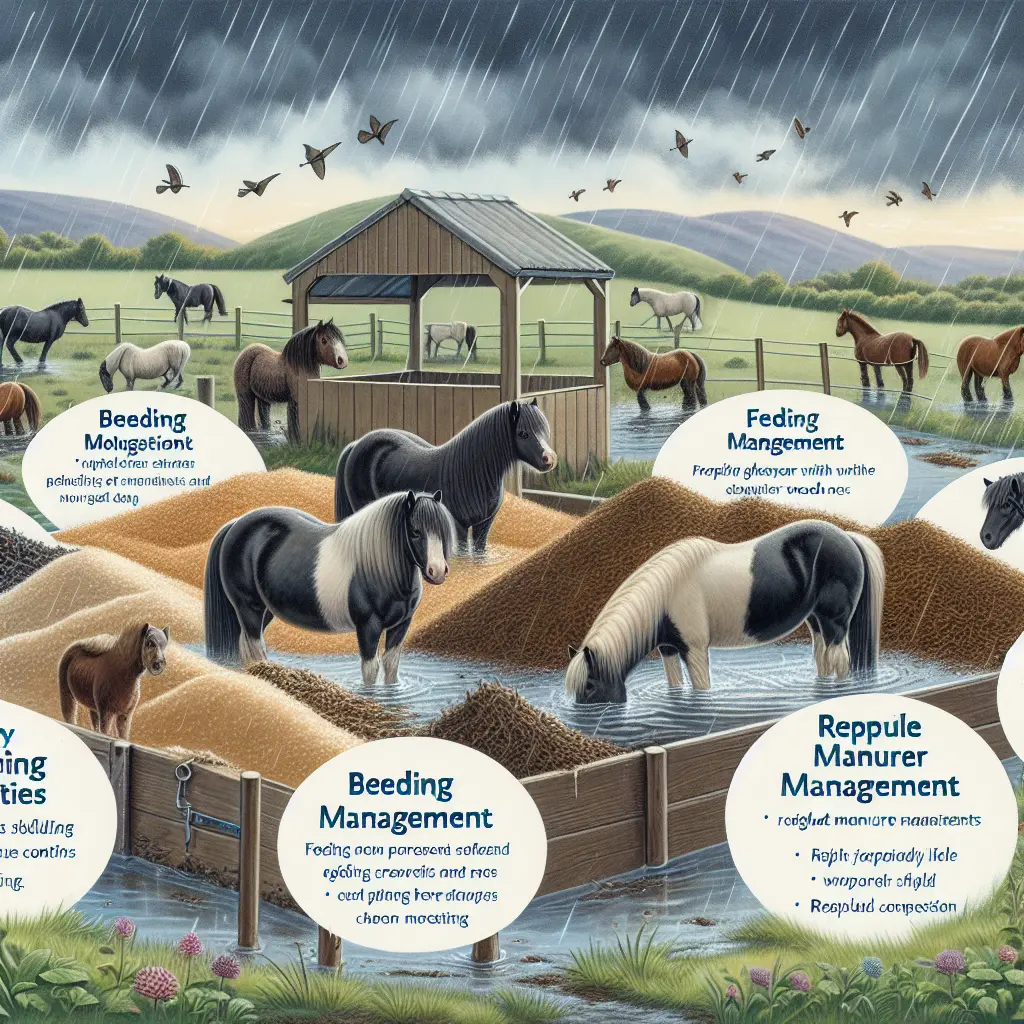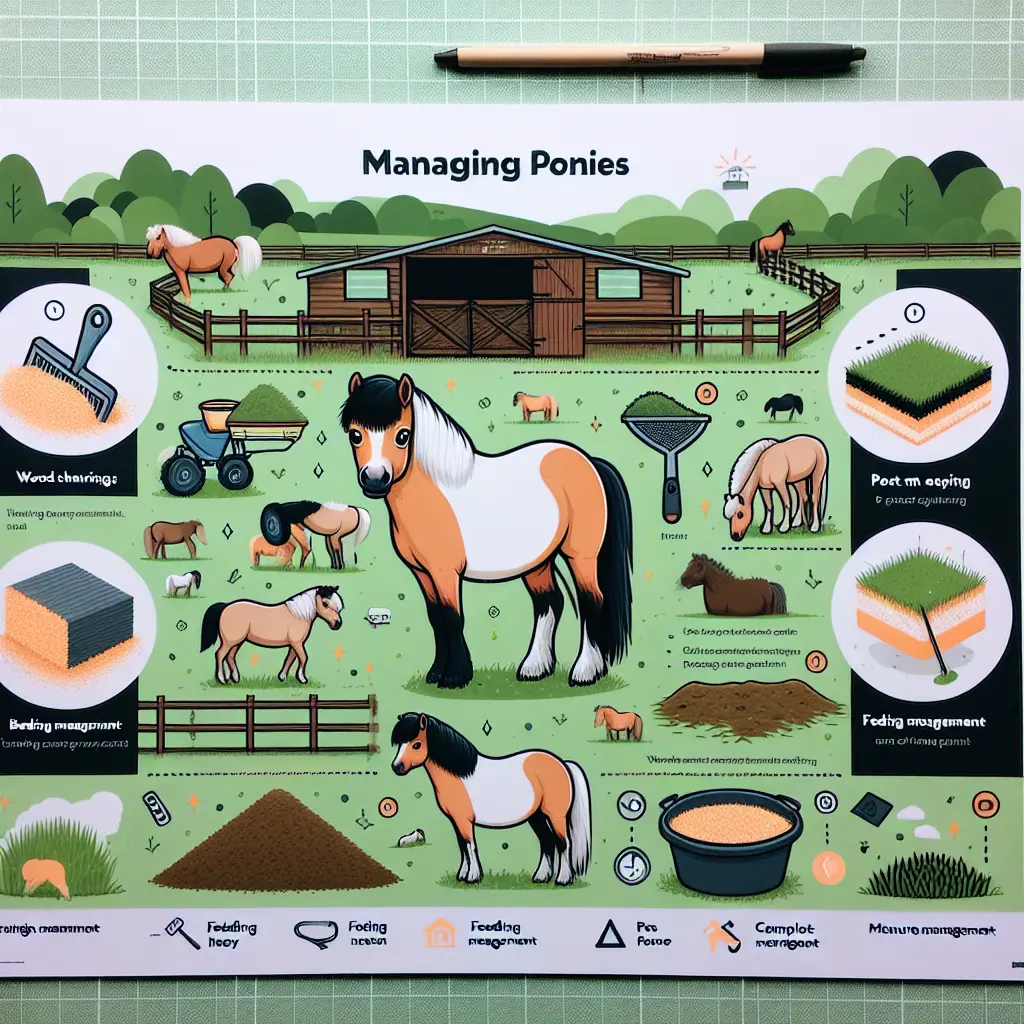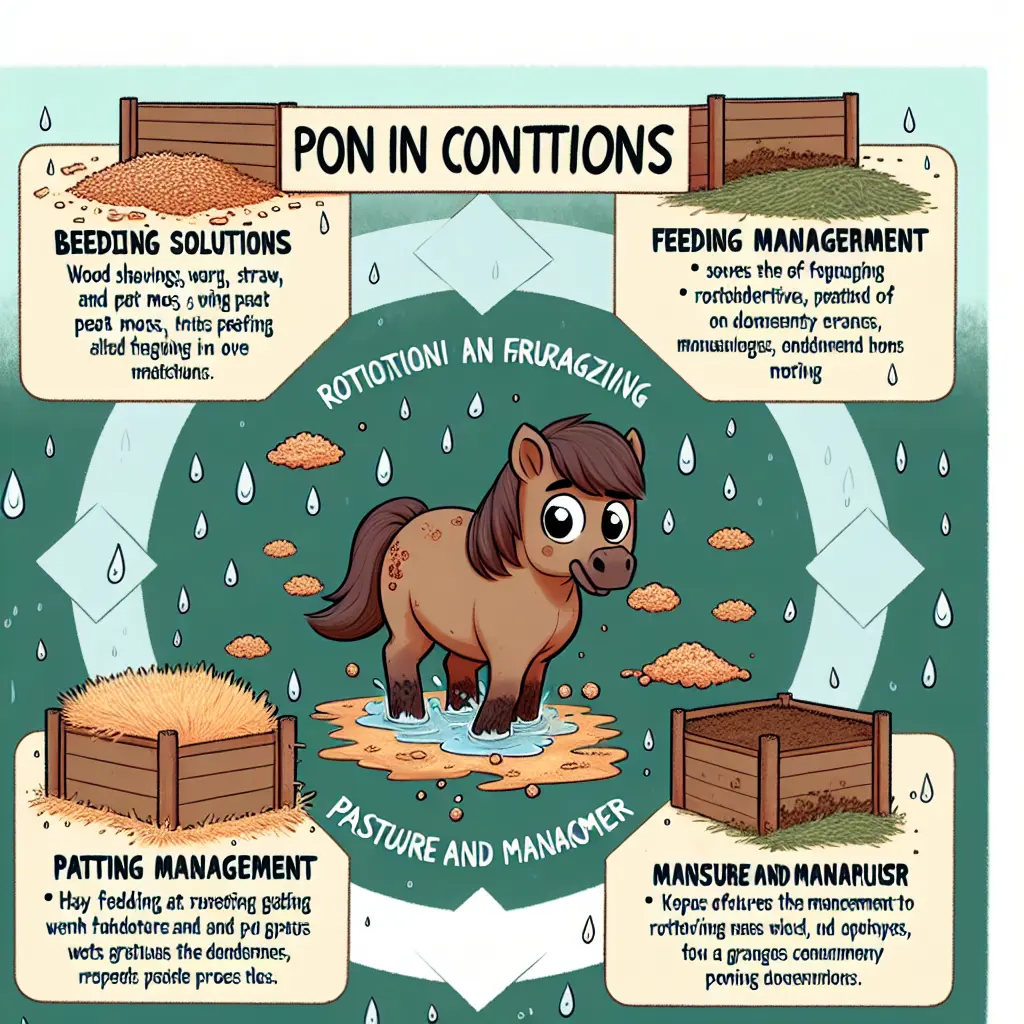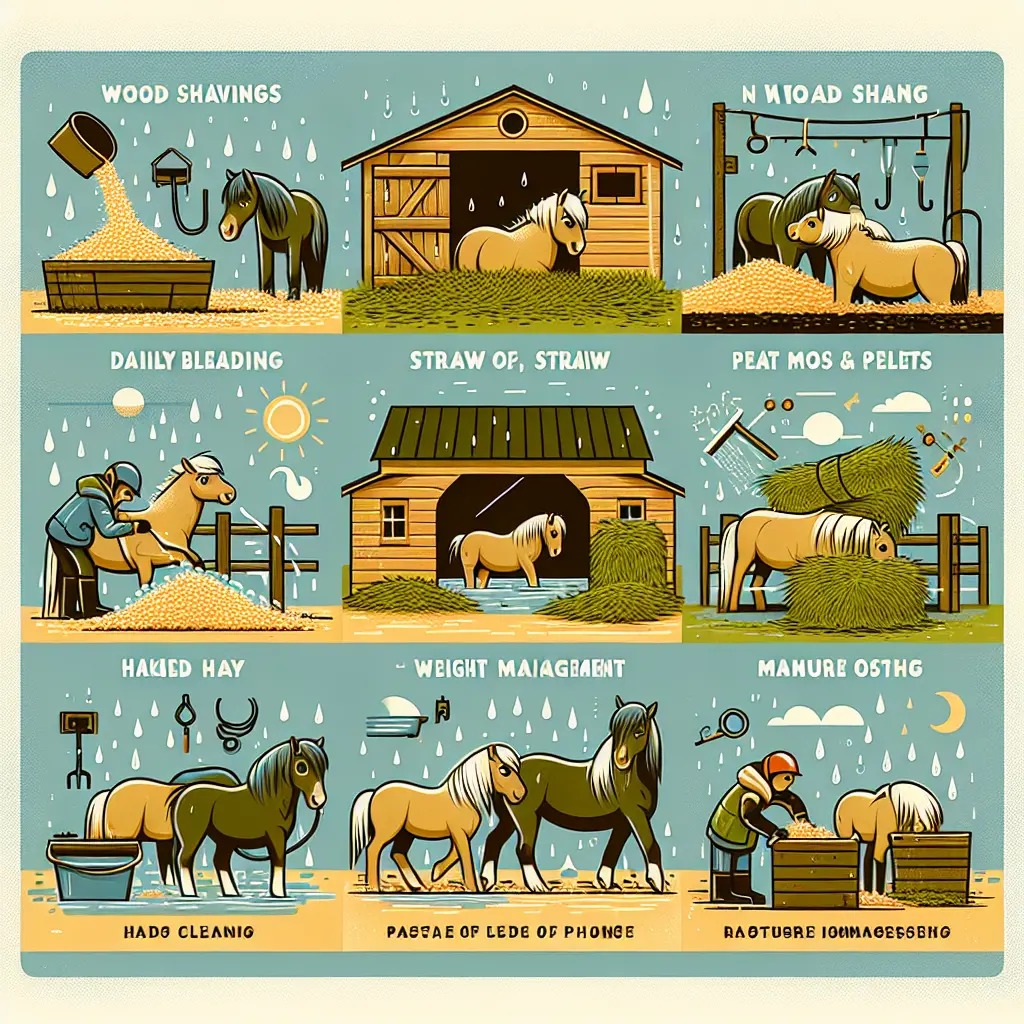Effective Strategies for Managing Wet Ponies: Bedding Solutions for Horse Owners
Handling ponies effectively in wet conditions requires a strategic approach that blends stable rug solutions, feeding strategies, and comprehensive care practices. This article delves into bedding strategies that prove beneficial for horse owners in maintaining dry, comfortable, and healthy ponies.
Understanding the Challenges of Wet Conditions
This image is  A picture speaks a thousand words, and this one conveys the challenge wet conditions pose.
A picture speaks a thousand words, and this one conveys the challenge wet conditions pose.
The impact of excess moisture on ponies can be daunting. It increases the risk of respiratory illnesses, hoof diseases, and overall discomfort. That's why selecting appropriate bedding solutions is pivotal in reducing these risks while maintaining pony health and well-being.
Bedding Solutions for Wet Ponies
The importance of bedding in maintaining a dry and cozy stall environment cannot be overstated. Here are some effective bedding solutions for managing wet ponies:
Wood Shavings or Chips
This image is  Effective absorption with wood shavings in action.
Effective absorption with wood shavings in action.
- Pros: Wood shavings provide excellent moisture absorption and good insulation, reducing the risk of respiratory issues.
- Cons: They may lean toward the pricey side and aren't the most eco-friendly option.
Straw
Using straw is another popular bedding choice.
- Pros: It's cost-effective, warm, and allows for deep bedding which keeps ponies dry.
- Cons: Its moisture absorption isn't as pronounced as other materials and it could be prone to mold if not properly managed.
Peat Moss or Wood Pellets
When you think of bedding alternatives, peat moss or wood pellets stand out.
- Pros: They offer high absorptiveness and help reduce ammonia levels, enhancing air quality within stalls.
- Cons: These can be on the higher end of the cost spectrum compared to traditional materials.
Tips for Bedding Management
Here's how to maintain your pony's stall bedding effectively:
- Daily Cleaning: Regularly remove soiled bedding to ensure the stall remains clean and dry.
- Complete Bedding Change: Schedule regular bedding changes to prevent moisture and bacteria buildup.
Feeding Management - A Complementary Strategy
This image is  Feeding management complements bedding for a healthy pony.
Feeding management complements bedding for a healthy pony.
Though bedding solutions are vital, feeding strategies are equally crucial. Here are a few pointers:
- Hay Feeding: Providing high-quality hay is key to ensuring ponies are well-fed, reducing their inclination to forage in wet conditions. Learn more about different feeding methods and their impact on intake rates here.
- Weight Management: Implement weight management strategies year-round. Soaked hay, for instance, reduces calorie intake but maintains nutrient supply. Discover more about weight strategies here.
Pasture and Manure Management
This image is  The vital role of pasture management can't be overlooked.
The vital role of pasture management can't be overlooked.
Proper management of pastures and manure sustains healthy grounds and reduces disease spread:
- Rotational Grazing: This practice avoids overgrazing and promotes pasture health while limiting mud buildup. Over half of horse farms employ rotational grazing during growing seasons. For more details, check out the findings here.
- Manure Management: Regular removal of manure is vital in preventing pasture contamination and upkeeping cleanliness. Composting and dispersing manure on crop fields are common methods.
Conclusion
The effective management of ponies in wet conditions hinges on a quality blend of bedding solutions, nutritional practices, and comprehensive farm management. Implementing these strategies ensures your ponies are kept comfortable and healthy year-round.
To further enhance your equestrian toolkit, explore our Jodhpur Collection, Horse Riding Boot Collection, and Horse Riding Socks Collection.
Visit Horse Fly Protection for essential products designed to keep flies at bay and check out Horse Treats And Gifts to reward your pony and enhance their wellbeing.


